Decoration of the household plot is the headache of almost all houses dealers. After all, everyone wants to find something unusual and special.
Although, as a rule, the brightest and unique blooming plants grow in a tropical climate. But the most zealous gardeners are still risking and growing beautiful wisteria, which thousands of multicolored covers of flowers descend to Earth during flowering. These are bright and fragrant flowering plants capable of making a chic area. Of course, in the territory of Central Europe and Asia, it is rare to meet this plant, but recently there are many varieties that perfectly carry our frosts. In order to see all the beauty of this plant with their own eyes, it is worth attaching a little effort when growing and leaving.
In this article, we will consider in more detail the features and description of Wisteria, we learn about the most common types and varieties of this plant. And also note the important nuances of agrotechnics of cultivation.
Features and Description of Wisteria
Wisteria also has a second name - Visteria, which this plant has received in honor of the professor of the university anatomy in Pennsylvania Caspar Vistara. Glicinia is a leaf falling curved tree, flowering plant relating to the bean family. This bright representative strikes everyone with its appearance, especially during flowering, when a large number of lung inflorescences hangs to the ground, like bright clusters. The natural area of \u200b\u200bhabitat is the territory of China, namely Hubei province. As a decorative plant, wisteria is distributed in extensive territories of tropical and subtropical climate: this is the Crimea, the whole south of Russia, the Black Sea region, the southern territories of the United States.
There is a very beautiful Chinese legend about the origin of Wisteria. A very long time in one village lived a beautiful girl whose name was Gui. She was so beautiful that no one could have a look from her. It was also beautiful and her hair, which in the afternoon was poured by purple-purple shades, and in the evening they became bluish. One day, the girl kidnapped the dragon, who after this atrocity turned into a tree, whining other plants. And when the dragon raised his head, trying to release the flame, only flowers appeared, resembling the hair of a beautiful girl.
Description:
- Glicinia translated from Greek means "sweet", which is associated with the beautiful aroma of its colors.
- There were a lot of disputes relatively, that flower is or liana. However, as a result, the general concept was formed that wisteria is a tree-like curly and flowering plant.
- In appearance, it is a branched liano with dowel branches.
- Adult liana wisteria in height can reach 15-18 m, and in the diameter of the crown sometimes grows up to 8 m in diameter.
- It differs not very fast growth - for the season can grow only 20 cm.
- Leaves in wisteria of large size, unparallers, which consist of 7-13 small leaves. Young leaves are slightly pubescent, later - naked.
- Flowers glycine pink, pale-lilac, purple, blue and white flowers, which are collected in loose inflorescences up to 30 cm long.
- The flowering of this amazing liana begins in the spring at the end of March or in early April and lasts almost until the end of the summer.
- Flowers of wisteria are distinguished by a delicious aroma.
- Wisteria is the queen among the Garden Lian and is widely used to decorate the site and buildings.
- In total, there are 9 species of this plant in nature, of which only a few received distribution on the territory of moderate climate.
Variety of types and varieties of wisteria
Beautiful wisteria has 9 varieties, but not all of them were widespread in our territory in a temperate climate. Let's give a brief description of the main types and grades of Wisteria.
Chinese wisteria
- It goes from China, where it grows in nature in large quantities.
- Chinese wisteria can reach 18-20 m in height.
- This is a high liana with a lot of foliage.
- The leaves are large, up to 30 cm long, unparallers. Most often consist of 7-10 small leaves.
- Flowers of this glinate of white or purple shade, most often collected in hanging loose brushes up to 30 cm long.
- Blossom starts in the middle of spring.
- Grows Lian very quickly. The main feature is to twist the barrel counterclockwise.
- It can withstand not long frosts up to minus 20 degrees.
- It looks great in landscaping the site, and it is also possible to use it for growing in tub.
To date, several varieties of Chinese wisteria are known:
- Chinese wiccine "Alba". Liana with snow-white flowers, less often with a small purple tint. It has very long inflorescences that can hang up to 40 cm.
- Chinese wisteria "Plena". This is wisteria with beautiful terry flowers.
- Glycinia "Sierra Madre". This form of Chinese wisteria blooms lavender purple flowers.
Glicinia rich-siling or multi-flower
- Sometimes you can meet the name of the magnifying glitching.
- Unlike Chinese wisteria, this liana has a smaller growth. It is in height achieves only 10 m.
- Large foliage, up to 40 cm long. It consists of a large number of small leaves, an average of 17-19 pcs.
- Judging by the title it is clear that the colors of this type of wisteria are more, they are collected in large inflorescences up to 50 cm long.
- Flowers themselves are slightly smaller than the Chinese.
- Glicinia blooms rejoicing with bright purple blue flowers. What the flowers are dissolved gradually.
- Blossom starts in the middle of spring.
- Another difference from Chinese wisteria is to twist the trunk clockwise.
- More frost-resistant, can withstand up to minus 23 degrees.
Distinguish between several forms of abundant glitching:
- Glycine "Alba". Plant with white flowers, less often with a small lilac case. Inflorescences are large, up to 60 cm long.
- Glycinia "Rosea". Flowers of this type of wisteria are distinguished by pale pink flowers with purple wings. Inflorescences can reach 45 cm long.
- Glicinia "Multi-Town". Flowers with beautiful lilac-blue flowers, which are collected in long inflorescences up to 90-100 cm long.
- "Royal Pearl." Flowers purple-purple flowers collected in inflorescences up to 50 cm long.
Glicinia beautiful
- This is a plant from the territory of Japan.
- Glicinia of low growth can grow up to 10 m.
- The leaves of this liana are also small, only 10 cm. They are slightly publisted on both sides.
- Flowers in diameter reaches 2-2.5 cm, which are collected in high-shaped inflorescences 20 C in length.
- Pretty white flowers blooms, there are also forms with terry and purple flowers.
Varieties of wisteria beautiful:
- Wisteria "White Silk". Flowers with snow-white colors collected in sufficiently long inflorescences.
Glicinia Shustaikovaya
- In height, this type of wisteria grows by 12 m.
- It is a curly plant with dowel branches.
- Differs in very small leaflets and flowers of purple or blue shade.
- The predominant occurs in the territory of Crimea or Chisinau.
- It feels great when growing in a personnel.
Glicinia Japanese
This kind of wisteria is not so popular and distributed as others. It is connected with the intolerance of frosts, the plant usually freezes to the very snow cover. It is a curly liano with white flowers. It grows in nature in Japan.
Glicinia Rubbishva
This species went from North America. Sometimes wisteria is a large-scale frozen. It features beautiful snow-white flowers, which are collected in cone-shaped inflorescences reaching 1 m in length.
On the basis of this type of breeders, a cold-rescue grade of wisteria was derived - Glycine Blue Moon. This type of plant can withstand frosts up to minus 40 without shelter.
Methods of reproduction of Glicia
This beautiful plant can be dissolved by a large number of ways. For reproduction, both vegetative methods are suitable and geneant.
Seed reproduction of Glicia
This is the most unpopular method of reproduction, when using which you can get wisterium, which will not bloom. Flowering is possible, but after many years. Also when growing wisteria from seeds, your plant may not inherit most of the decorative maternal signs.
- Glicinia seeds need to be heated in the greenhouse in November or in December. If you decide to plant right into the ground, then you need to do it at the beginning of spring.
- Previously, it is necessary to prepare a nutrient soil, which should consist of a sheet humus, turf, garden land and sand.
- Seeds must be seen on the surface and spray with a small layer of sand.
- Sowing moisture and glue with glass or film.
- For normal germination of seeds, wisteria needs to create dark conditions.
- Sowing consists in constant ventilation and soil moisture.
- Temperature should be within 20-25 degrees of heat.
- The first shoots appear for 3-4 weeks.
- After that, the containers with shootings need to be taken out in the light half, where they grow to the appearance of several strong leaves.
- Further seedlings need to dive into individual pots. At the same time, make sure that the root system is not damaged. It is best to dive along with a room of land.
- In the spring, the grazing bush can be transplanted to the selected place or for rearing in the street greenhouse.
Glicinia reproduction of grinding
- The cuttings must be harvested in late autumn.
- To do this, in Wisteria, you need to find strong and healthy shoots of this year and cut the cuttings of 20-25 cm.
- After that, all the harvested cuttings need to be folded together and tie.
- The resulting beam is placed in a container with a wet substrate. The container must be put in a cool and dark place.
- Prepare cuttings to landing early in spring when the container with planting material is getting from the storage location.
- In the spring, you can land stalks to grow into a greenhouse, and you can put it right into the open soil under plastic bottles.
- It is also possible to reproduce with winter cuttings that are harvested in advance.
- It is best to apply this method in February.
- To do this, shoots to split into two halves along, and then cut into short cuttings, approximately 5-8 cm.
- When cutting cuttings, follow. So everyone has one soil in the center.
- Such cuttings need to plant in the prepared containers and put them in a greenhouse, where the cuttings are kept to their complete rooting.
Reproduction by chains
- Split wisteria with falling in the fall.
- To do this, on the maternal bush you need to choose a strong and healthy lower escape.
- Next, make a longitudinal incision on it, which will be enshrined in the soil.
- The scenes should be sprinkled well with a nutritious soil, leaving only the top on the surface.
- In the spring or autumn you need to check the root system. If it is enough, it can be disconnected from the maternal bush and land at a permanent place.
Preparation before planting wisteria
To obtain a beautiful and healthy plating, wisteria is important to carefully prepare in front of the landing process itself. It is necessary to choose high-quality planting material, preferably pedigree seedlings of wisteria. It is also important to choose on its site the most suitable place for this capricious plant.
Seat seedlings of Wisteria
To facilitate the planting process of wisteria, it is best to acquire already strengthened seedlings. Usually they can be purchased in special agrofirms or nurseries, where professionally deal with the cultivation of various types of plants. To buy wisteria is preferably with a closed root system, so liana is better attached and will be less susceptible to damage. Before buying, you must carefully inspect the seedling. It should not be damage and signs of diseases and pests.
It is not necessary to acquire seedlings of wisteria in the natural markets and from strangers. In this case, you can get into the unpleasant situation when you have not exactly what you expect. It is also best to buy more frost-resistant varieties of this plant so that later be able to admire the beauty of his flowering.
Selection of places for landing
Glicinia is an exotic plant, so it is quite capricious about the conditions of growth, including the place of growth.
- For full growth of wisteria, it is necessary to choose a sunny and outdoor area where the sun will be at least half a day.
- The place must also be protected from drafts.
- A predetercity should be thought out a fairly spacious area, since the wisteria creates very quickly.
- When choosing a place, also take into account the composition of interest to you. After all, wisteria can be used to design walls at home, arbors and terraces.
Choice and preparation of soil for landing of wisteria
This liana prefers to grow on nutrient and loose soils. It is also important that the soil is weakly alkaline with minimal lime content. Although wisteria can grow on other soils, only it will be less active. It is important that the soil in the selected place is well drained, since wisteria does not carry a long stagnation of water from the roots.
Glicia landing technology
- It is best to plant wisterium into an open soil in spring when the threat of the last frosts.
- The selected landing place must be well overcooked, about one shone shovel.
- During this process, compost can add to the soil.
- Further you need to dig up the landing pits for each seedling, if you have purchased them several. The main thing is to remember that for one plant you need a lot of space.
- The size of one landing pit should be 60 cm in width and 50 cm in depth.
- Before boarding, carefully remove the seedling from the container. You can prenate the soil in it to moisten to not damage the root system.
- In every pit, you need to put a layer of drainage to prevent water stagnation in the roots of Wisteria. As a drainage you can use small stones or clay.
- At the bottom of each pit, put a little mineral fertilizer.
- Next, gently put a sapling into the pit and sprinkle soil, slightly tamping his hands.
- After planting, it is necessary to abundantly pour a plant.
- Take care of the supports in advance, the liana grows very quickly and its branches must be supported.
Gliceing agricultural machinery: nuances and care secrets
Caring for glycine is a rather laborious process, as this is a very capricious plant, whose homeland is subtropics. It is important to maintain the moistened state of the soil, as well as to carry out periodic feeding and soil looser.
Watering Glicia
Wisteria needs a moderate regular watering. To make it easier for you to navigate and eliminate cases of pouring plants with water, look at the soil around the Lian - it should be slightly wet constantly. But not wet. In a particularly hot season of the season, it is necessary to increase, since the buds from the lack of moisture can begin to crumble. It is best for watering to use the spraying method. In mid-September, watering must be stopped.
Loosening and weeping
Periodically, during the entire season, the soil around the plant needs to loose, so wisteria prefers to grow on loose and light lands. It is best to carry out this process after irrigation. In parallel, you need to remove all weeds that can interfere with the growth of Liana. The soil in the attractive circle can be meditated to reduce the amount of loosenings and reduce moisture evaporation. As a mulch, you can use a dry peat or sawdust.
Trimming
To stimulate the appearance of new Budunov, old faders need to be cut off. Also liana needs periodic trimming for the formation of the crown. This process should be carried out in the summer, in its course the lateral shoots should be cut up 20 cm of their length. If you grow wisteria as a stammerous culture, then you need to remove all stems except one. When growing a plenty plant, cutting up all the side shoots that give only greens. However, too often the plant is not worth it, because you can not see the blossom of this beautiful plant at all.
Support Glicia
During the landing, it is necessary to take care of the support that will serve for a long time. The support should be strong and reliably maintaining the branches of the plant. The fuses of wisteria on the support must necessarily be supported in autumn to facilitate the removal of branches for shelter.
Falker Glicia
To get a gorgeous flowering tree, you need to regularly feed it. The plant needs a weekly fertilization. You can alternate the introduction of liquid mineral fertilizers and organically. As an organic, the infusion of a cowboy, diluted with water in proportion of 1 to 20, should not be made during active bootonization nitrogen fertilizers, otherwise the plant will be well to let foliage, but not flowers.
Fighting diseases and pests
Wisteria is sufficiently resistant to the emergence of various diseases and pests, but sometimes the plant is still treating.
Glicinia diseases:
- Chlorosis. This disease appears in the plant in the presence of a large amount of alkali in the soil. Signs of chlorosis is the yellowing of foliage. To combat this disease, you need to use salts of iron.
Pests:
- Aphid. The most common pest, from which you can get rid of special insecticides.
- Mite. To combat this pest, you can use acaricidal preparations.
Wiccine shelter for winter
Most of the types of wisteria are not very well tolerated frost and cold, so they need shelter. In the fall, after feeding foliage, it is necessary to remove all branches from the supports and put them on the soil around the trunk. Previously, the soil must be dipped in the rolling collar. Next, all shoots should be covered with a noodle and nonwoven underfloor material.
Use of Wisteria in Landscape Design
Glicinia is a very decorative plant, whose beauty is assessed by landscape designers. Unfortunately, it is quite difficult to grow a large and flowering tree in our territory, however, with small efforts it is possible to achieve a positive result.
In landscape design, wisteria is used in various versions:
- As a liana for hiding arbor, walls of houses, and terraces.
- As a beautiful strabamic plant, which can be grown in large pots.
- Wisteria is great for growing as a room plant, for example, to create bonsai.
Stock Foto Wisteria in landscape design
More clearly see all the beauty of wisteria and the ways to use it for decorating the site can be on the proposed photos.
Decoration of glyciny walls at home
Creating flower arches
Growing wisteria in ads
Liana is the most desirable and beautiful elements of landscape design, which are able to turn the usual plot into artwork. And the wisteria is rightfully considered to be the Queen Lian, whose beauty is striking at first sight.

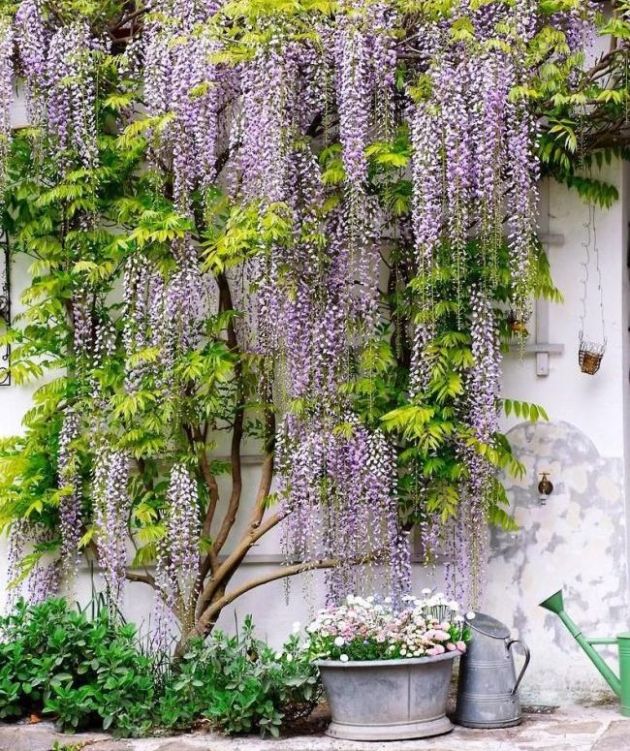
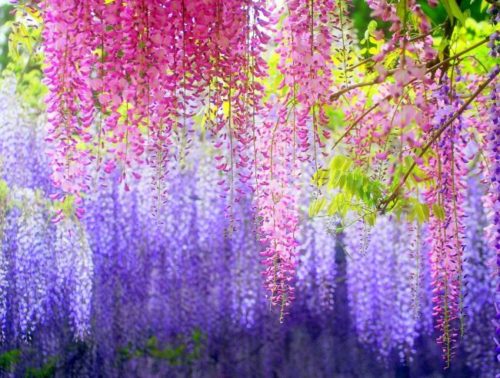
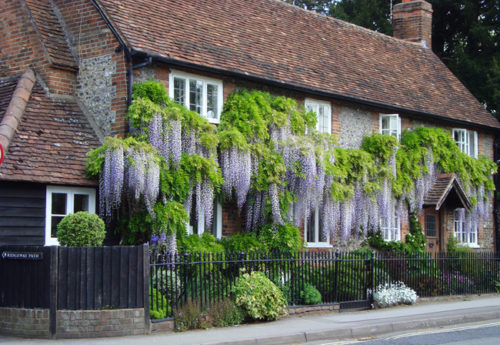
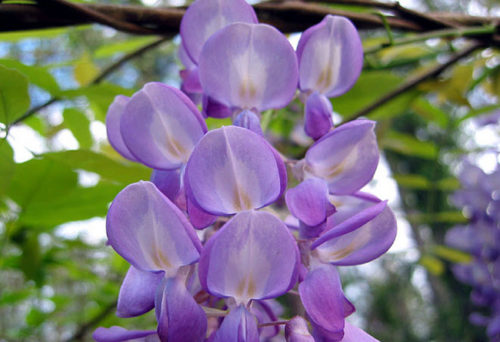
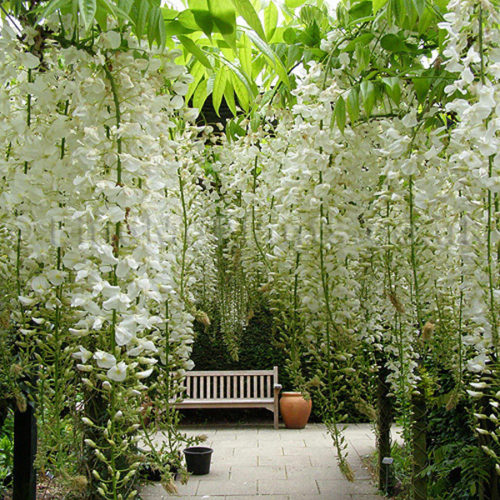
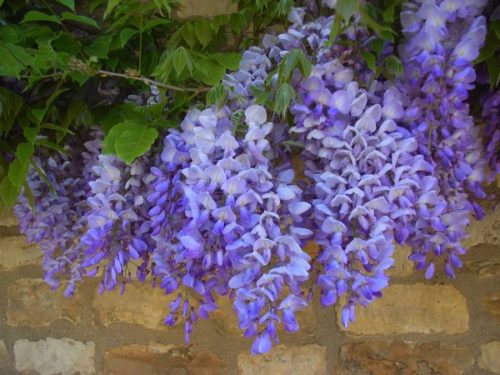
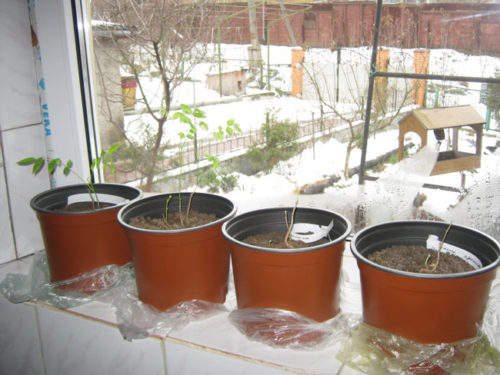
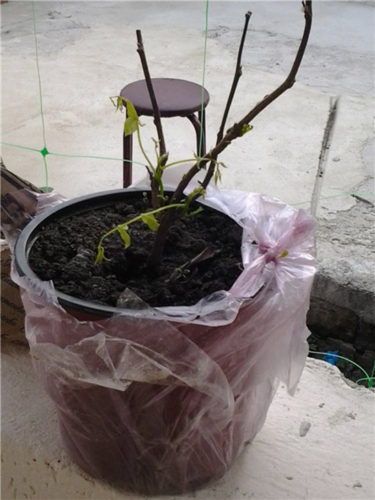
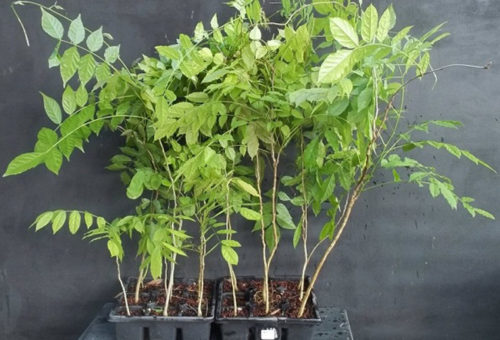
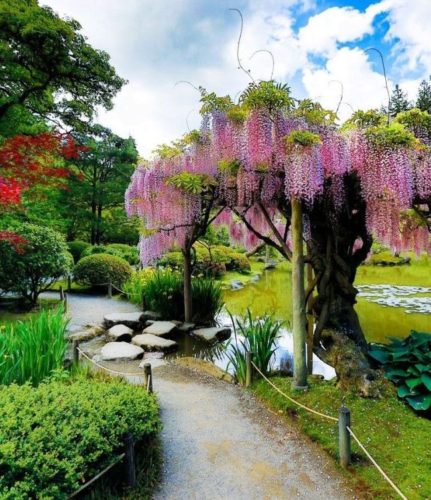
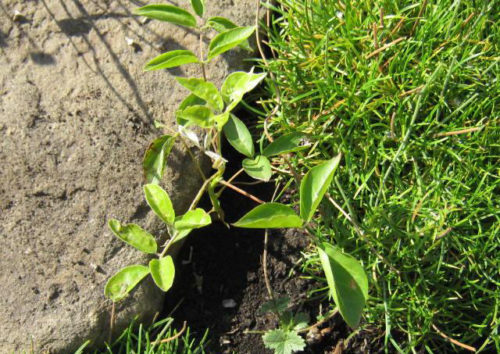
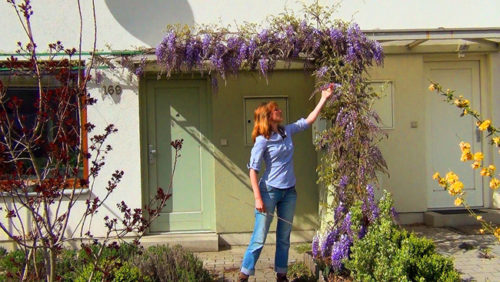
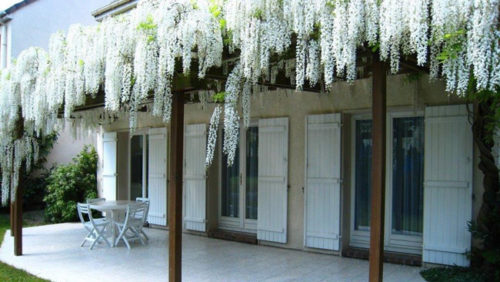
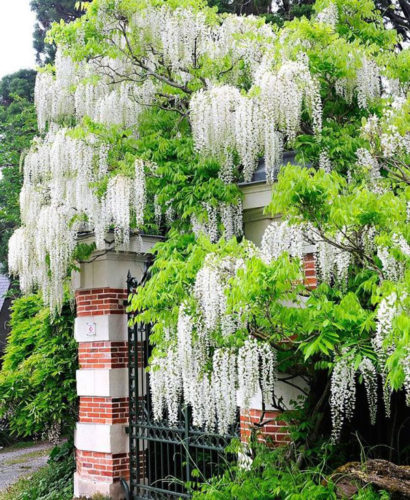
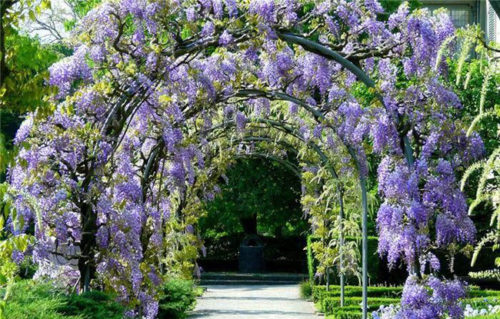
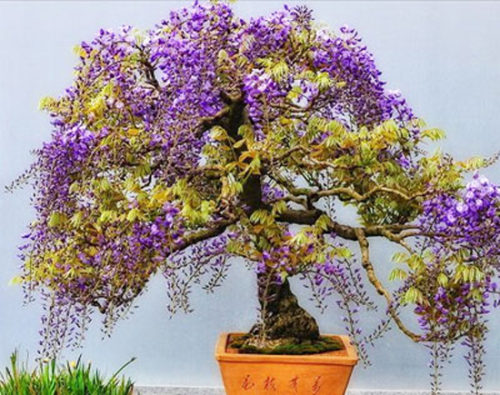












 Start a discussion ...
Start a discussion ...